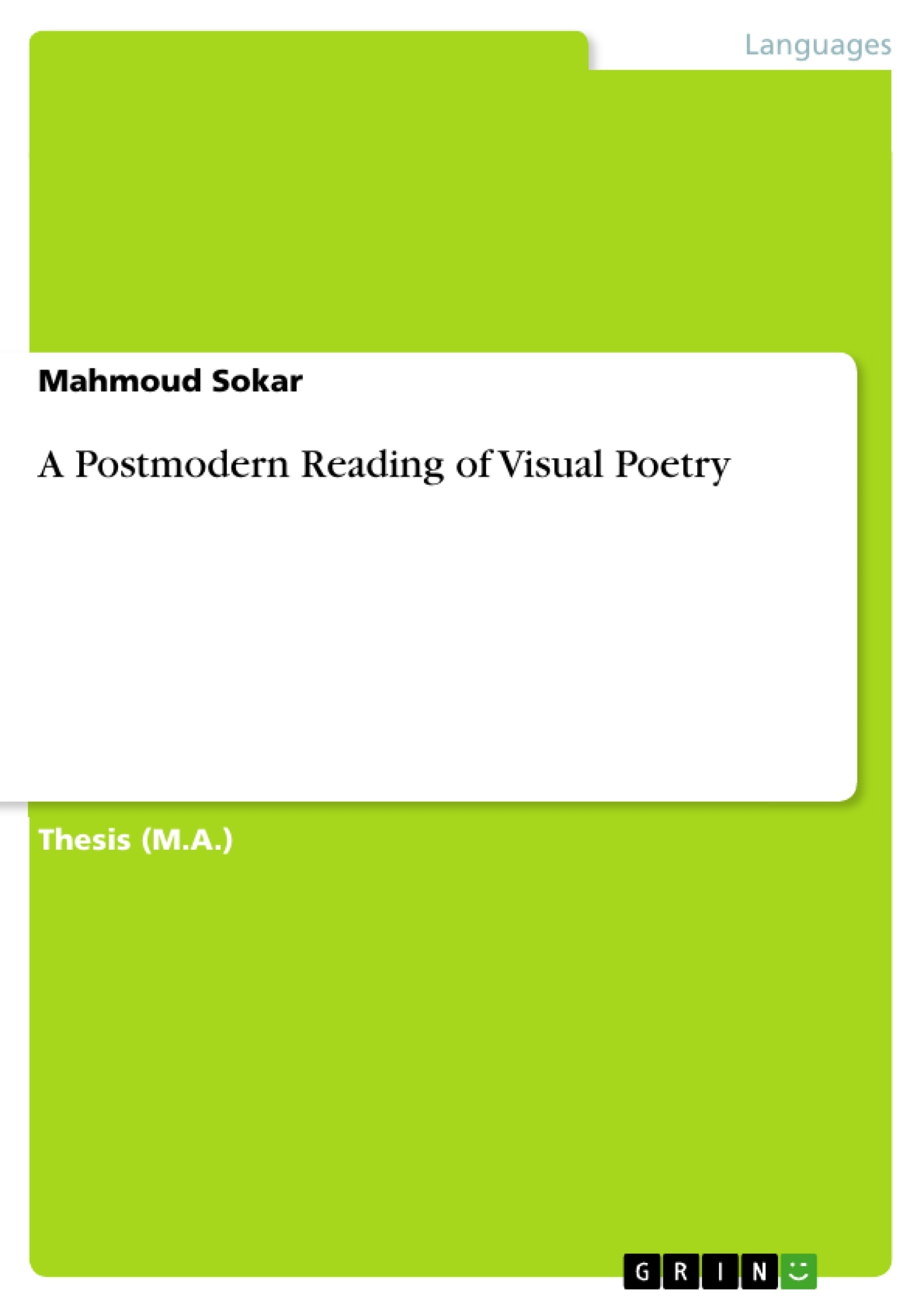This study aims at clarifying and defining the development of visual poetry movement through the term, postmodernism. Moreover, it tries to focus on the major features of postmodernism applied in some modern visual poems written or designed by contemporary and modern visual poets. These features are iconoclasm, groundlessness, formlessness, populism, intertextuality (pastiche), hyper reality, and techno-culture. Then, it moves to give a detailed account of the features of post-postmodernism in the genre, especially in Fluxes visual poems which are also known as performance poems.
Inhaltsverzeichnis (Table of Contents)
- Introduction
- Defining Visual poetry
- A Postmodern Reading of Visual Poetry
- Intertextuality (pastiche)
- Hyper reality and Techno-culture
- Iconoclasm
- Formlessness
- Populism
- Groundlessness
- Postmodernism decadence and the appearance of post-post modernism
- Conclusion
Zielsetzung und Themenschwerpunkte (Objectives and Key Themes)
This study aims to clarify and define the development of the visual poetry movement through the lens of postmodernism. It focuses on the major features of postmodernism as they are applied in modern visual poems, exploring concepts such as iconoclasm, groundlessness, formlessness, populism, intertextuality, hyper reality, and techno-culture. The study also examines the characteristics of post-postmodernism within the genre, particularly in Fluxus visual poems, also known as performance poems.
- The influence of postmodernism on visual poetry
- Key features of postmodernism in visual poetry
- The emergence of post-postmodernism in visual poetry
- The evolution of visual poetry as a multi-cultural movement
- The adaptability of poetry to contemporary trends
Zusammenfassung der Kapitel (Chapter Summaries)
- Introduction: This chapter introduces the concept of visual poetry and its development from traditional forms to modern and postmodern iterations. It highlights the increasing significance of visual elements in poetry due to technological advancements and the evolving needs of contemporary readers.
- Defining Visual poetry: This chapter delves deeper into the definition of visual poetry, emphasizing the importance of visual arrangement in conveying meaning. It discusses the influence of various avant-garde movements and the role of both visual and verbal elements in creating a complete work of art.
- A Postmodern Reading of Visual Poetry: This chapter examines the application of postmodernist principles in visual poetry, exploring themes such as intertextuality, hyper reality, iconoclasm, formlessness, populism, and groundlessness.
Schlüsselwörter (Keywords)
The primary keywords and focus topics of this work include visual poetry, postmodernism, iconoclasm, groundlessness, formlessness, populism, intertextuality, hyper reality, techno-culture, Fluxus, performance poems, and post-postmodernism.
- Quote paper
- Mahmoud Sokar (Author), 2016, A Postmodern Reading of Visual Poetry, Munich, GRIN Verlag, https://www.grin.com/document/535117



